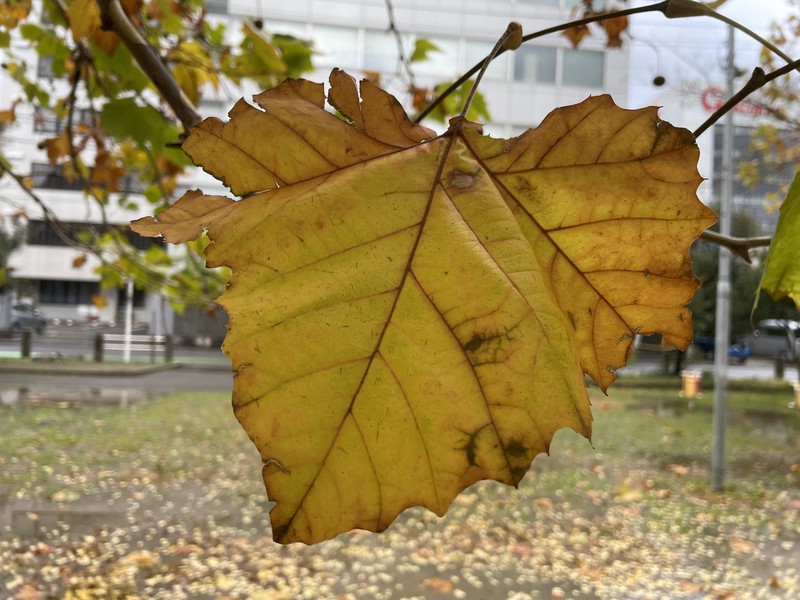
I'm really not an expert when it comes to trees and I still have problems telling the difference between a pine and a fir. But over the last few years, I've at least caught up a little in this respect and expanded my knowledge a little. The main reason for this is probably our many excursions, which take us out into the parks, forests and mountains and where we sometimes get quite close to nature. And especially in the parks, I've always come across a few trees that have aroused my curiosity and where I initially had no idea what I was seeing. But every now and then I've managed to fill in at least a few of the gaps in my knowledge, and I've always found the internet to be a great help.
And that's what happened again recently when I took a detour on the way home from work and crossed a small park. It was a bit rainy, but I didn't want to let that stop me - a bit of autumn foliage is always good for the mood and somehow I can't get enough of it.
And there in the middle of the park was this tree with these large leaves and these distinctive round fruits hanging from its branches. From a distance, these fruits looked familiar, but they didn't belong to the tree I first suspected.

Most of the leaves had already turned yellow and brown, but some were still very green and didn't give away what season we were in. But as there were already many leaves on the ground, it was hard to deny that fall had taken over.

As I said, most of the leaves had already changed color and some of them looked even more striking than usual. They reminded me a little of the leaves of maple trees, but only almost.

An internet search quickly led to new conclusions. One of the websites that can identify plants from photos quickly came up with a few suggestions. From these I received the answer that we are dealing here with a representative of the plantain trees, which is presumably found predominantly in the northern hemisphere.

The fruits of the plantain look like small balls and immediately caught my eye at first glance. The balls are somewhat hard, but even though it may look otherwise, they are not covered with spines.

This is in stark contrast to the fruits of the American sweetgum tree, which can be seen in the last photo. Although these are also round and have a stalk, but they are spiky and look almost like a chestnut. However, when they are hanging from the top of the tree, they look quite similar when viewed from below, and so I first suspected that the sweetgum tree was standing around here in this park.
But it was a plantain, which I have to admit was not the first time I had seen it in my life. But I probably just hadn't paid any attention to it back then, which I finally did on this day. And that's how I ended up learning something new again and being a little happy about my new knowledge. Great, I hope something like this happens again next time too....
Comments